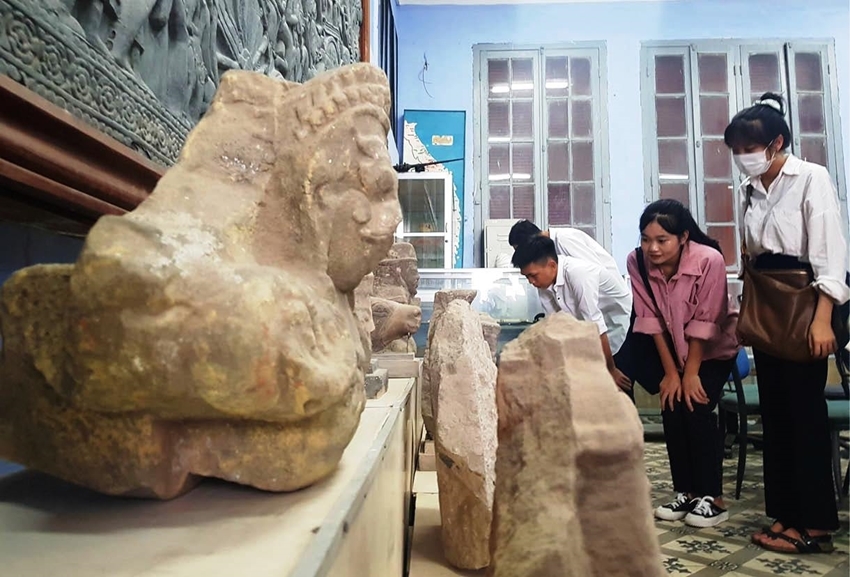
Thursday, 10/08/2023 07:01
(GMT+7)
A museum inside the University
TTH.VN - With numerous precious artifacts, the Museum space of Ethnology - Archeology (belonging to the Faculty of History, University of Sciences, Hue University) is not only a place for students to carry out research and study but also an ideal destination attracting interests of cultural and research circles in Hue.
    |
 |
| The Museum of Ethnology and Archeology being an appealing space for students to visit and carry out field trip |
Being located on the 2nd floor of a building with the charming French architecture of the University of Sciences, facing Nguyen Hue Street (Hue City), the Museum of Ethnology - Archeology welcomes many students and groups of visitors to visit and learn every day.
Many people can’t help feeling astonished when they first set foot in this space. Presented in a scientific order, this space currently has more than 500 original artifacts of archeology, ethnology, and history with high historical - cultural value.
Most of these artifacts were collected by lecturers and students of the Faculty of History through fieldwork in the Central and Central Highlands provinces. Some of them were passed down by Hue University after its dissolution in 1976. In 2014, the museum's artifacts of pre-Dong Son and Dong Son cultures were added thanks to an exchange with the Museum of Anthropology (University of Social Sciences and Humanities, Vietnam National University, Hanoi).
Although the number of artifacts here is not considerable and not enough for all periods, there are typical artifacts displayed in this museum, representing the archaeological relics of Central Vietnam from prehistory, protohistory to history.
Notably, there are Champa cultural sculptures collected by teachers and students in the faculty from the ruins of Linh Thai tower in Vinh Hien commune (Phu Loc district), with distinct types, such as bas-reliefs of Brahmin monks, goddesses, Nandin bull head, Garuda bird god, Makara sea monster, etc.
In addition, the museum also possesses collections of Vietnamese and Chinese porcelain and ceramics from the 18th to 20th centuries. In particular, there are two mirror paintings of the reign of Emperor Thieu Tri, a woodblock of the Nguyen dynasty, and other collections of ancient coins and seals of Dai Viet.
Many ethnographic artifacts collected from field trips in Nam Dong, A Luoi or far-away districts in Quang Nam province and Central Highlands are also displayed in this museum. All have reflected every aspect of the population material culture and represented cultural creations.
Many students of the Faculty of History in particular and the humanities and social sciences of the University of Sciences (Hue University) in general said that they were interested in learning and practicing in the museum's space with their "first-hand” experience. Many students come to the museum regularly, besides to be supplemented with knowledge, they consider this place as their second home, where they can meet artifacts and love more and more the culture and history of the country.
Dr. Nguyen Van Quang, Vice Dean of the Faculty of History, University of Sciences, Hue University, shared that thanks to the richness of artifacts, the museum had become a useful and interesting visual learning place for students within the faculty, as well as the visitors. The delegations of domestic and foreign visitors to the university and faculty often admire the museum and appreciate the value of the collections of artifacts here.
From 2012 up to now, the museum has conducted a number of cooperation activities with external agencies to exchange and lend some unearthed artifacts for thematic display.
According to Dr. Quang, the faculty is aiming to continue to enrich the existing collections at the museum in order to further promote the value for the training and learning of the staff and students in the faculty. At the same time, it becomes a useful place to visit and carry out studies for researchers and the in-need citizens
“We want the museum to continue to maintain professionalism and quality, as well as practicality. In addition, the artifacts could be made the best use to promote their role in teaching students in the faculty, in the university as well as the outside society," shared Dr. Quang.
Story and photo: Nhat Minh